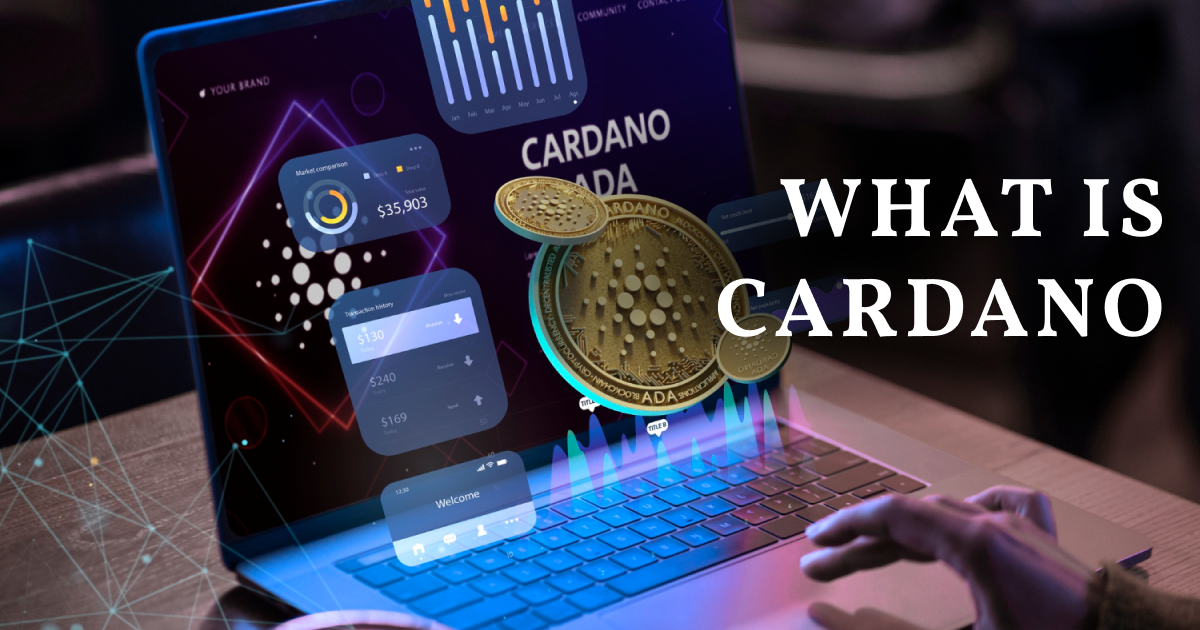
Cardano Unveiled: A Deep Dive into the Third-Generation Blockchain
27th February 2024 | 2 minutes read
Embark on a journey into the world of blockchain innovation as we unravel the intricacies of Cardano, a third-generation blockchain platform that has captured the attention of the crypto community. In this blog post, we’ll explore the vision, technology, and unique features that set Cardano apart, paving the way for a new era of decentralized applications and smart contracts.
Genesis of Cardano
At the heart of Cardano lies a commitment to sustainability, interoperability, and scalability. Launched in 2017 by the co-founder of Ethereum, Charles Hoskinson, and developed by Input Output Hong Kong (IOHK), Cardano was designed to address the limitations and challenges faced by previous blockchain networks.
Cardano’s Unique Approach – Layers and Protocols
Cardano separates its architecture into distinct layers, each serving a specific purpose.
Settlement Layer (CSL):
The foundational layer responsible for handling ADA transactions and maintaining the ledger.
Utilizes the Ouroboros consensus algorithm, a proof-of-stake protocol.
Computation Layer (CCL):
A layer dedicated to smart contracts and decentralized applications (DApps).
Enhances security by separating computation from the settlement layer.
Section 3: Ouroboros – The Proof-of-Stake Consensus
Cardano employs the Ouroboros consensus algorithm, a groundbreaking approach to secure and sustainable blockchain networks.
Proof-of-Stake (PoS):
Unlike traditional PoW (Proof-of-Work) systems, Ouroboros selects block producers based on their stake in the network.
Enhances energy efficiency and scalability.
Staking and Delegated Proof-of-Stake (DPoS):
ADA holders can participate in staking or delegate their ADA to a staking pool.
Promotes decentralization and network security.
Cardano’s Roadmap to Smart Contracts – The Alonzo Upgrade
Cardano’s journey toward full smart contract functionality reached a significant milestone with the Alonzo upgrade.
Plutus Smart Contract Platform:
Utilizes Plutus, a domain-specific language for smart contracts.
Enables developers to create secure and expressive smart contracts.
Marlowe:
A domain-specific language for financial contracts, providing a user-friendly interface.
Targets users without extensive programming knowledge.
Cardano in Action – Real-World Applications
Explore how Cardano is making an impact in various industries and sectors.
Financial Services:
Facilitating secure and transparent transactions without the need for intermediaries.
Exploring the potential for decentralized finance (DeFi) applications.
Identity Management:
Leveraging blockchain for secure and tamper-proof identity verification.
Empowering individuals with control over their personal data.
ADA – Cardano’s Native Cryptocurrency
ADA, the native cryptocurrency of Cardano, plays a pivotal role in the network’s functionality.
Staking Rewards:
ADA holders can earn staking rewards by participating in the network’s PoS consensus.
Encourages active participation and contributes to network security.
Utility in the Cardano Ecosystem:
Used for transaction fees, participating in governance, and accessing various services within the Cardano ecosystem.
Challenges and Future Developments
Cardano, like any evolving technology, faces challenges and opportunities on its path to widespread adoption.
Competition and Collaboration:
Competing with other blockchain platforms while exploring collaboration opportunities.
Focusing on interoperability to foster a connected blockchain ecosystem.
Scalability and Adoption:
Addressing scalability concerns as the network grows.
Enhancing partnerships and use cases for broader adoption.
The Cardano Revolution
Cardano represents a significant evolution in blockchain technology, driven by a commitment to sustainability, scalability, and inclusivity. With a strong focus on research, peer-reviewed development, and community participation, Cardano stands as a promising player in the blockchain space.